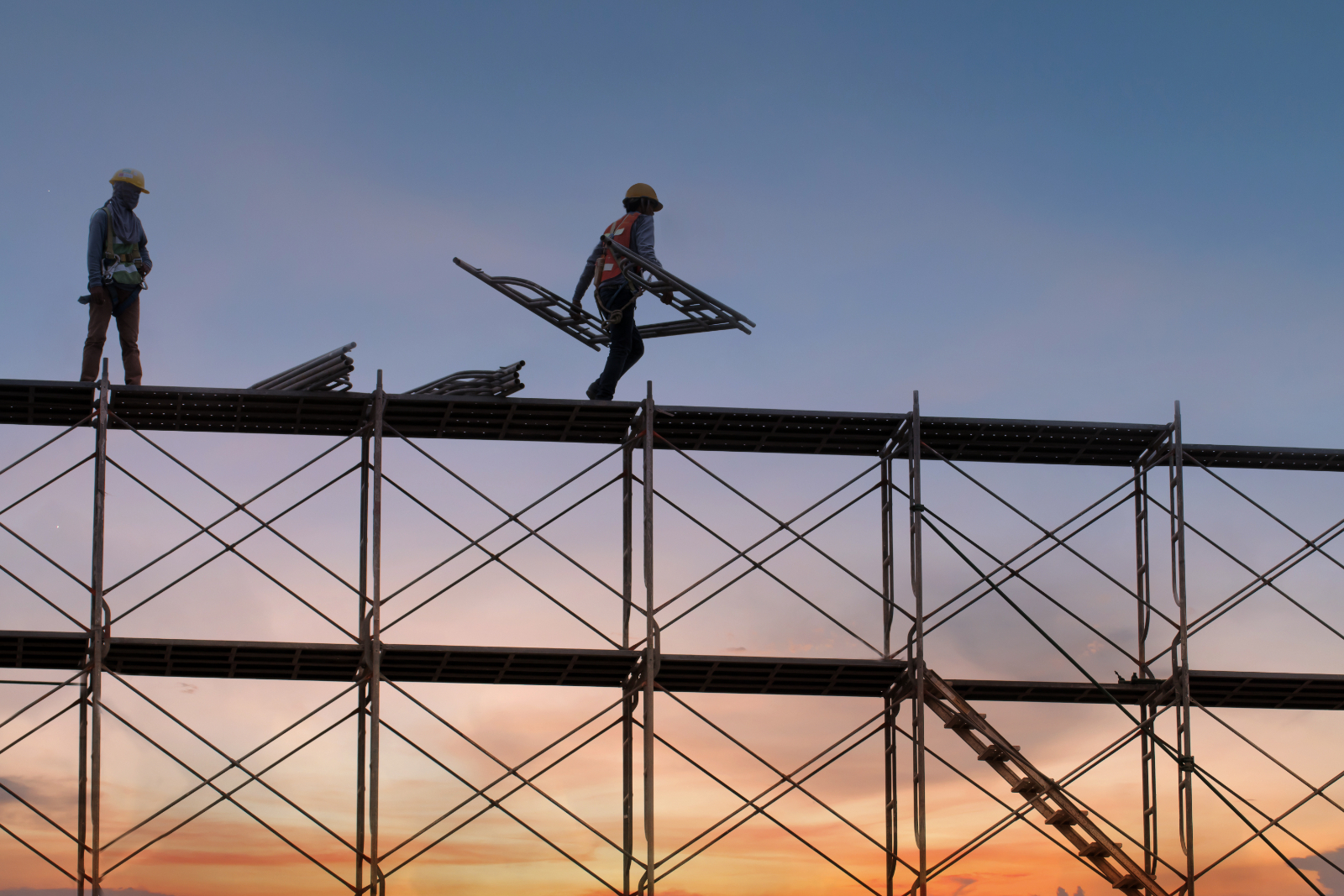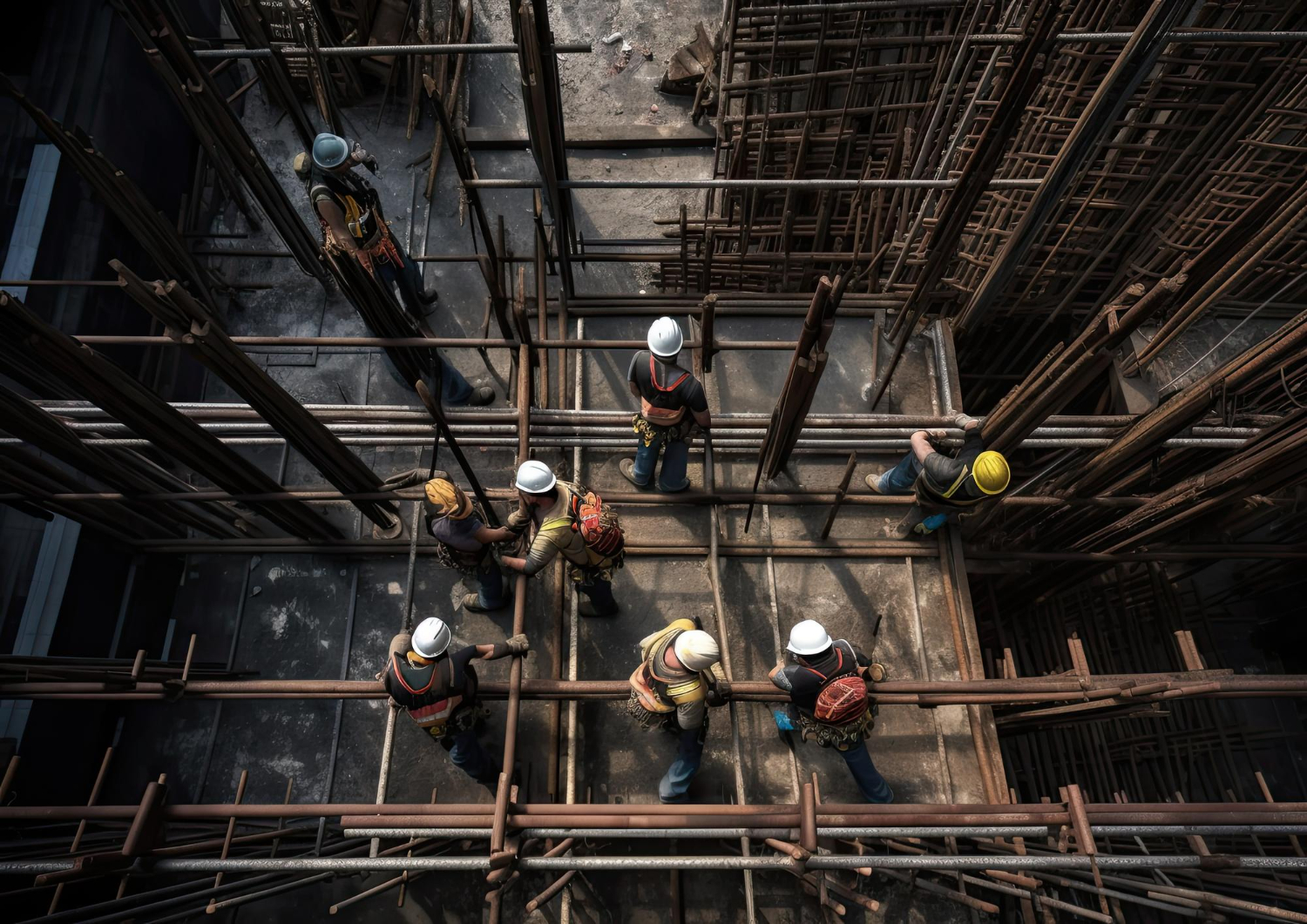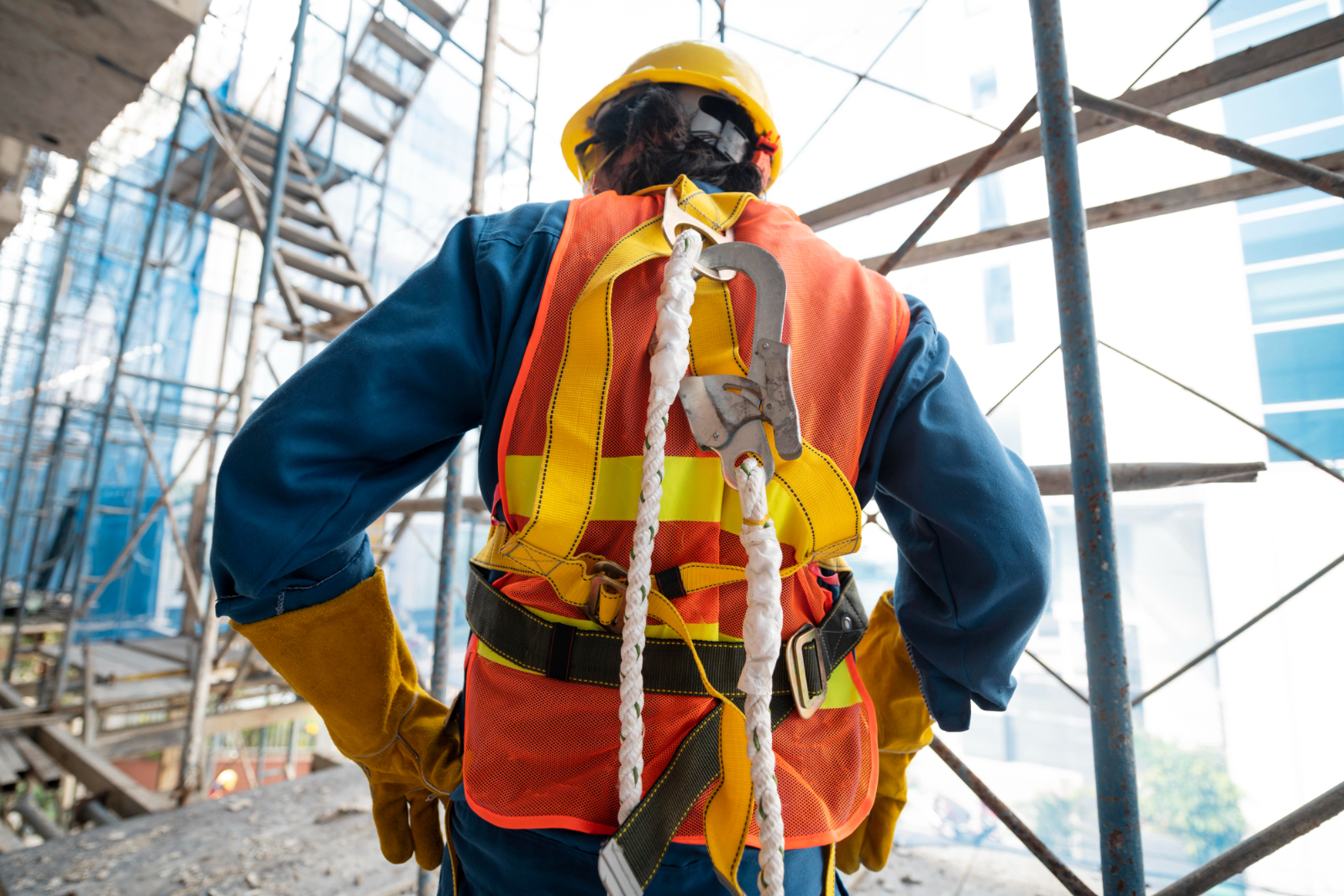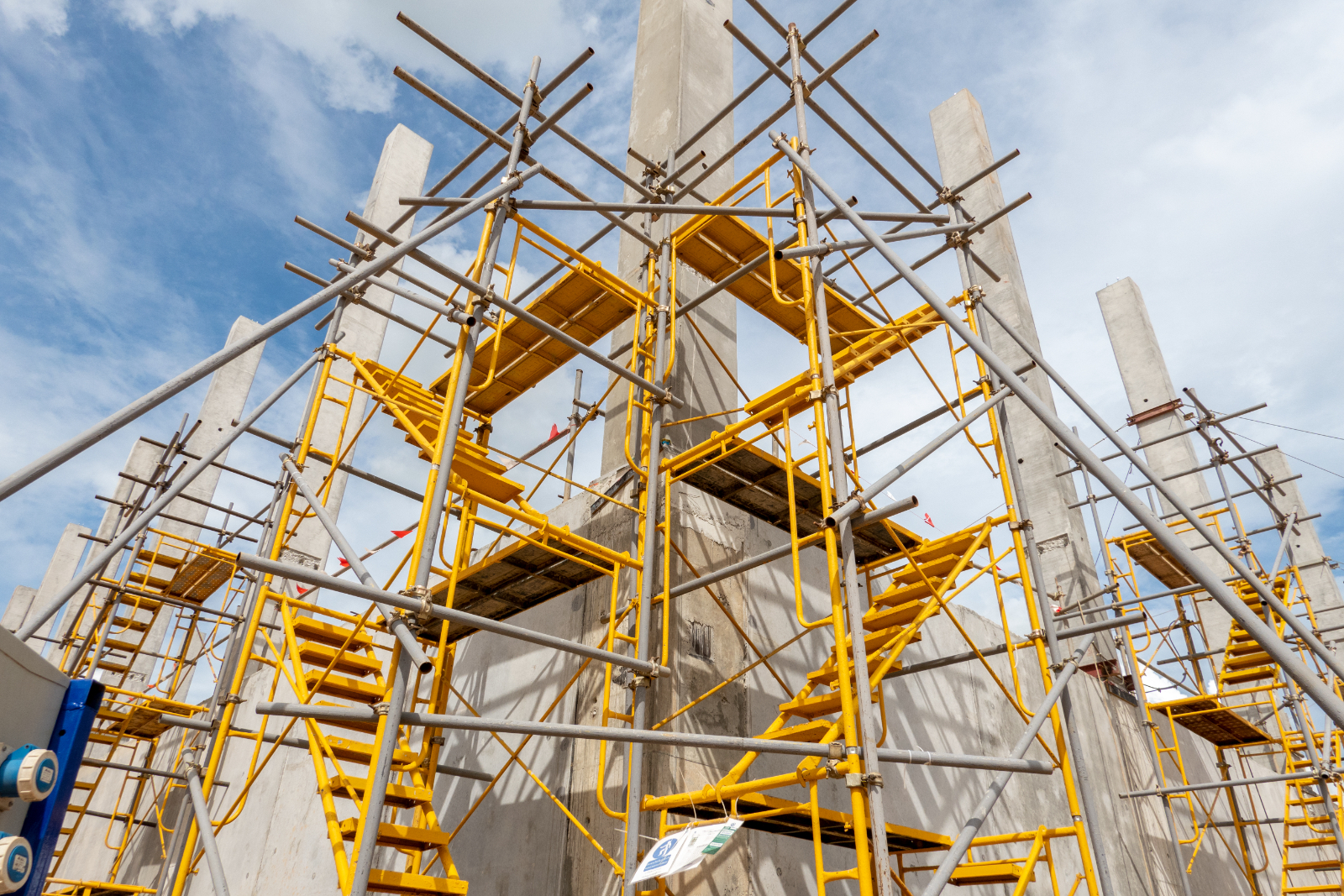This page asks: how do you prevent scaffold falls? Learn essential safety measures and practices to ensure a secure work environment. From proper installation and guardrails to regular inspections, we provide actionable insights to minimize the risk of scaffold accidents.
Northampton Scaffolders offer bespoke scaffolding hire throughout Northampton, Daventry, Wellingborough and Northamptonshire. Prioritize worker safety and reduce fall-related incidents with our comprehensive tips.
Scaffolding is an incredibly useful way for workers to perform tasks at height. This is why you're likely to see scaffolding being used on almost any construction project. However, if you don't use it properly, it can lead to serious injury. This is why site managers and supervisors must be aware of the risks involved and implement safety precautions to prevent falls and other accidents.
Since most scaffolding work takes place at height, it makes sense that falls are some of the most documented incidents. After this, falling objects and scaffolding collapses are the second and third most common cause of injury.
The majority of these incidents occur because of poor scaffolding use. Whether this is overloading the frame with too much weight, leaving materials and tools lying around to trip people or being kicked off the work platforms. Electrocution from overhead power lines is also a significant risk you must be aware of.
If your employees note that the scaffolding you've provided is unsafe, they have the right to refuse to work on it. No one should be made to use any equipment that is faulty and could cause serious harm. This is why appropriate health and safety equipment is so vital when working with scaffolding.
As an employer, it is your responsibility to ensure that everyone working on your site can do so safely. There are many ways to make your scaffolding safe to use, starting with an awareness of the risks involved. Once you know what hazards to look out for, you can implement the right safety measures to help workers avoid them.

Preventing falls from scaffolding
Again, falls from height are one of the most common accidents that occur when working with scaffolding. It's also one of the most serious since scaffolding workers are often operating at great heights. There are thousands of workers injured each year due to falls. Unfortunately, a portion of those falls results in death.
However, by following regulations from the Health and Safety Executive (HSE) and adhering to the scaffolding manufacturer's instructions, you can minimise the risk of falling. Here are some other tips you can use to help keep yourself and others safe when working with scaffolding.
Choose the right scaffolding
Different jobs require different types of scaffolding. Therefore, you must ensure the type of scaffolding you choose meets the demands of your project. This includes matching your scaffolding to the height you need to reach, the ground conditions of your site, the weather and the load-bearing capacity you need.
You must also ensure that your chosen scaffolding is designed, built and inspected by a fully-qualified individual who can supervise the structure when in use. These persons have the necessary training to safely create and oversee the scaffolding. This also means you must never improvise your own scaffolding structure or use damaged components.
Beware of electrical hazards
Since most scaffolding is made from metal, electrical hazards must also be avoided wherever possible. Things like power lines, wiring and electrical equipment can all lead to electrocution. You must maintain a set distance from overhead or underground powerlines to minimise this risk.
Any electrical power tools or equipment you use must also be deemed safe and grounded when in use on your scaffolding. Your employees must be made aware of any nearby electrical wiring or power sources too so they can avoid these hazards.
Use fall protection
Using adequate fall protection equipment is vital for work on scaffolding. Everything from personal fall arrest systems to safety nets and guardrails can all help to keep employees safe. Any safety harnesses much have an appropriately strong lifeline attached to a permanent anchor that can support the employee's weight.
Any guardrails or safety nets must also be installed properly to guarantee their effectiveness. These should cover all exposed sides of the scaffolding to mitigate any accidents. When employees are on the scaffolding, they should never climb around the guardrails or safety nets, as this just defeats the purpose.

Use Fall Protection

Keep The Scaffolding Clean And Organised
Observe the rules of access
Knowing how to climb scaffolding properly and following the designated rules of access will help to keep everyone safe. Whether you use stairs, ladders or ramps to climb and descend the scaffolding, everyone working must be aware of the proper access routes.
Any access points you install should be clearly signposted so everyone can know where they are. They should also be made stable enough to use confidently. Employees should never jump, climb or slide down the scaffolding components, as this only increases the risk of injury.
Keep the scaffolding clean and organised
Leaving tools, equipment and materials lying around on your scaffolding dramatically increases the chances of an accident. Cluttered work platforms can lead to trips, slips and falls. Therefore, keeping your scaffolding clean and tidy is the best way to mitigate this risk.
You should remove all tools, materials, debris and equipment from the structure when they are not in use. It's also prudent to avoid overloading the scaffolding with items that are too heavy for it to handle. Additionally, never drop or throw things from the top of your scaffolding and avoid keeping things close to the edge.
Communicate with others on the site
Our final tip is to maintain open and effective communication with everyone working on your scaffolding. Co-workers and supervisors can better maintain control of the scaffolding when they know what is going on. Ensuring everyone can understand the safety instructions, hand signals and posted signage will help improve their safety.
This includes reporting any hazards, damage or accidents that do occur. Informing everyone of where the most dangerous hazards are will help them avoid accidents. You should also ensure no one interferes when someone is working on the scaffolding, and that they are always accompanied by a supervisor.

The Importance of Scaffolding Safety for Construction Workers
Scaffolding is an incredibly common site on most construction projects, which is why scaffolding safety is such a high priority for those working in the sector. Most projects require employees to work at height, whether for a construction project, renovation or any other type of work.
This popularity only increases the chance of employees being exposed to the risks involved. Whether you're working on supported, mobile or suspended scaffolding, manufacturers also play their part in your safety. They do this by constructing their scaffolding from high-quality materials, such as steel or aluminium.
These materials have high load-bearing capacities that can hold the weight of employees and any equipment they might need. But manufacturers can only do so much. It's your responsibility to ensure your scaffolding is built and used correctly.
Any work taking place over 5 feet in height must come with appropriate safety precautions. Using industry-approved safety measures is the best way to guarantee your employees' safety. By reducing the risk of falls, electrocutions or any other potential accident, you can help reduce the number of people injured on scaffolding every year.
Why Scaffolding Safety Training is Critical
Training is one of the most important safety precautions when it comes to scaffolding. Ensuring your employees and supervisors have the right training brings two key benefits. The first is that they will understand the risks involved with scaffolding. And the second is that they will know how to mitigate these risks.
Without proper training, employees won't know how to deal with the potential hazards involved, which means they're more likely to fall victim to them. Additionally, as an employer, your employees' training is your responsibility. You must ensure your workers have the right training and qualifications to perform their work.
At Northampton Scaffolders, we offer a broad spectrum of scaffolding services for our customers in Northampton to hire. Our family-run business is fully qualified and has all the experience to deliver and install bespoke scaffolding and roofing covers. We complete scaffolding solutions for residential and commercial building projects.






